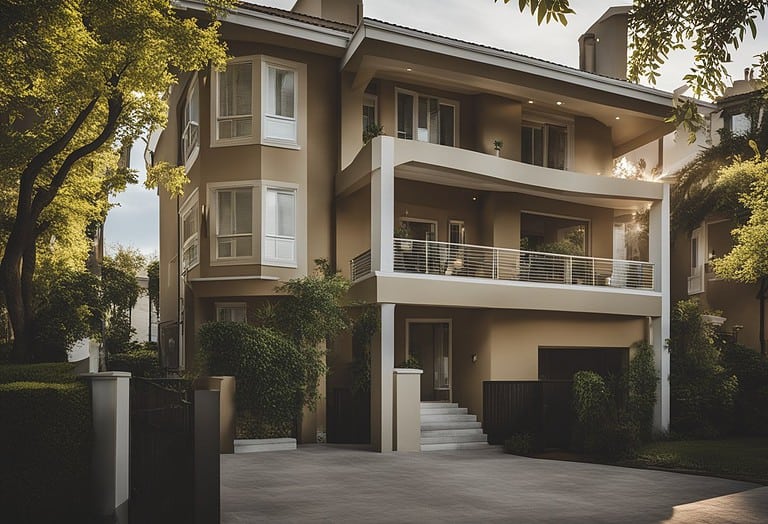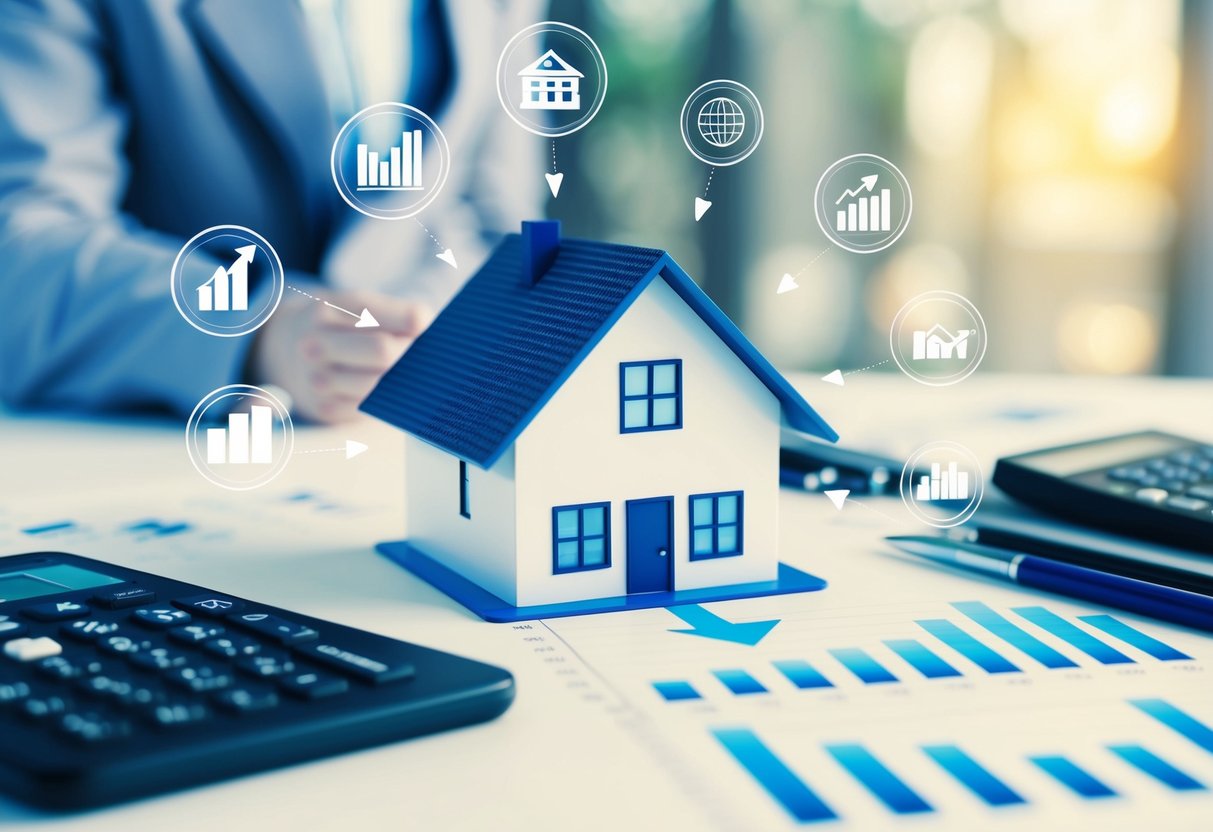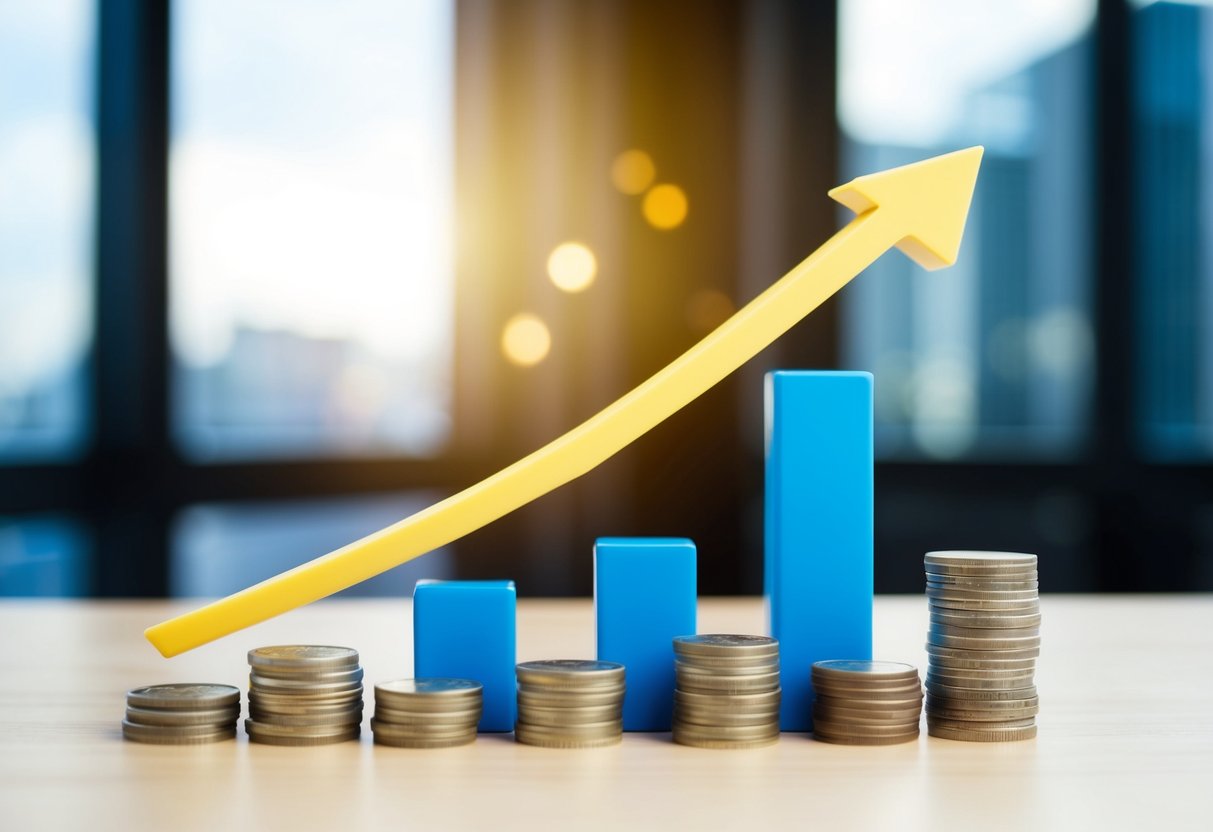When diving into the world of property investment, one crucial factor to consider is the rental yield of a property. Rental yield is a percentage that represents the return on investment (ROI) from renting out a property. As an investor, understanding what constitutes a good rental yield can help you make informed decisions when purchasing properties, ensuring they provide a strong cash flow and contribute positively to your financial goals.
Calculating rental yield involves determining the annual rental income and comparing it to the property’s market value. A higher yield signifies a stronger cash flow, but may come with trade-offs such as lower or slower capital growth potential. Good rental yields often vary depending on factors like location, property type, and the property’s features. In metropolitan areas, especially state capitals, gross rental yields typically range from 3% to 5%. Meanwhile, in regional areas, gross rental yields can exceed 5%.
As an investor, it’s essential not only to know how to calculate rental yield but also to understand how various factors, such as expenses and vacancy rates, can affect your net rental yield. This helps in determining whether a property is a good investment and what strategies can be employed to improve its yield.
Key Takeaways
- Rental yield represents the return on investment from renting out a property, making it an important factor for property investors.
- Good rental yields typically range from 3% to 5% in metropolitan areas, with regional areas potentially having higher yields.
- Understanding the factors affecting rental yield, such as expenses and vacancy rates, can help investors make informed decisions about property investments.
What is Rental Yield?
Rental yield is the annual return on investment (ROI) you receive from renting out your property. It’s expressed as a percentage of the property’s value or purchase price and is one of the key indicators of a property’s performance and potential. There are two types of rental yield: gross and net. In this section, we’ll discuss both types of rental yields and how they impact your investment.
What is Gross Rental Yield?
Gross rental yield is the simplest way to calculate rental yield. It is the annual rental income divided by the property’s value or purchase price. This calculation does not take into account any expenses or costs associated with owning and maintaining the property. It gives a general idea of the rental income potential of your investment property.
To calculate the gross rental yield, you can use the following formula:
Gross Rental Yield = (Annual Rental Income / Property Value or Purchase Price) × 100
For example, if you receive $30,000 each year in rent and the property is worth $500,000, your gross rental yield would be:
$30,000 ÷ $500,000 × 100 = 6%
What is Net Rental Yield?
Net rental yield is a more accurate way to calculate rental yield. It is the annual rental income minus the annual expenses and costs (such as mortgage interest, property taxes, insurance, repairs, maintenance, and management fees) divided by the property’s value or purchase price. It gives you a realistic picture of the actual return on investment (ROI) from renting out your property.
To calculate the net rental yield, you can use the following formula:
Net Rental Yield = (Annual Rental Income - Annual Expenses and Costs) / Property Value or Purchase Price × 100
For example, let’s say you have the same property as before, but you also have $5,000 in annual expenses and costs. To calculate the net rental yield, you would do:
($30,000 - $5,000) ÷ $500,000 × 100 = 5%
When evaluating your property investment, it’s important to consider both gross and net rental yields. While gross rental yield provides a general overview of the rental income potential, net rental yield offers a more accurate and realistic measure of your actual ROI. This can help you make informed decisions about your investment and ensure that it’s working in your best interests.
How to Calculate Rental Yield
Learning how to calculate rental yield is essential to understand the potential return on your property investment. In this section, we will cover two key concepts necessary for calculating rental yield: gross rental yield and net rental yield. Let’s dive into the details.
How to Calculate Gross Rental Yield
To get started, you need to calculate your property’s annual rental income and know its property value or purchase price. The formula for calculating gross rental yield is simple:
Gross Rental Yield = (Annual Rental Income / Property Value) x 100
For instance, let’s say you rent out a property at $500 per week. That gives you an annual rental income of $26,000 ($500 x 52 weeks). If your property is valued at or purchased for $500,000, you can calculate the gross rental yield as follows:
Gross Rental Yield = (26,000 / 500,000) x 100 = 5.2%
In this example, your property’s gross rental yield is 5.2%.
How to Calculate Net Rental Yield
Calculating net rental yield is a bit more involved and provides a more realistic representation of your return on investment. To do this, you not only need your annual rental income but also your property’s annual expenses and costs, as well as the property value or purchase price. The formula for calculating net rental yield is:
Net Rental Yield = ((Annual Rental Income - Annual Expenses and Costs) / Property Value) x 100
Let’s use the same example from earlier: you rent out a property at $500 per week, and the property value or purchase price is $500,000. This time, let’s assume you have annual expenses and costs of $20,000. We can now calculate the net rental yield:
Net Rental Yield = ((26,000 - 20,000) / 500,000) x 100 = 1.2%
In this example, your property’s net rental yield is 1.2%.
By understanding how to calculate both gross and net rental yield, you can gain valuable insight into the performance of your investment property and make informed decisions about your portfolio. Don’t forget to regularly update your calculations to account for market fluctuations and potential changes in expenses or rental income.
What is a Good Rental Yield Amount?

In the world of property investment, you might be wondering what constitutes a good rental yield for different types of properties. As you’ll see, the answer depends on various factors and can vary significantly based on property type.
| Capital City | Houses | Apartments | Commercial Property |
| Sydney | 3.08% | 3.10% | 4.30% |
| Melbourne | 2.92% | 3.10% | 4.50% |
| Brisbane | 4.28% | 5.10% | 5.90% |
| Adelaide | 4.31% | 5.20% | 7.80% |
| Perth | 4.40% | 5.30% | 6.90% |
| Hobart | 5.50% | 5.60% | 6.50% |
| Darwin | 5.86% | 7.50% | 7.20% |
| Canberra | 4.43% | 5.40% | 5.60% |
Rental Yield By Capital City and Property Type. June 2023.
What is a Good Rental Yield Amount for Houses?
A good rental yield for houses depends on factors like location, size, condition, amenities, and demand. According to CoreLogic, the average gross rental yield for houses in Australia was 3.3% as of February 2023. However, this figure varies across different regions and cities. Typically, a rental yield of 5% or more is considered good for residential properties, but an excellent yield of 10% or more might catch your investment-savvy eye.
What is a Good Rental Yield Amount for Apartments?
When it comes to apartments, the location, size, condition, amenities, and demand also play crucial roles in determining a good rental yield. As of February 2023, CoreLogic reported that the average gross rental yield for apartments in Australia stood at 4.0%. While this percentage takes the national average into account, the reality is that yields can vary significantly based on the specifics of the property. In general, a 5% or higher rental yield is perceived as good for apartment properties.
What is a Good Rental Yield Amount for Commercial Property?
Commercial properties, including offices, retail spaces, warehouses, and so forth, tend to garner higher rental yields compared to residential properties. Tenants often cover a majority of the expenses and agree to more extended lease terms. CBRE noted that the average gross rental yield for commercial property in Australia was 5.4% as of December 2022. However, this average also fluctuates depending on the sector, location, and property quality. For instance, prime office property in Sydney CBD had a 4.3% average gross rental yield, while Adelaide CBD saw yields of 7.8%.
In general, a commercial property with a gross rental yield of 6% or higher is considered good while a net rental yield of 5% or higher is also deemed worthwhile. It’s crucial for you, as an investor, to evaluate each property on its merit, keeping in mind your investment goals and risk tolerance.
How to Improve Your Rental Yield?

Improving your rental yield can increase your cash flow, return on investment, and the value of your property. To help you boost your rental yield, we’ve compiled a few methods:
1. Increase the rent
Staying informed about the rental market is essential if you want to adjust your rent accordingly. Conduct regular market comparisons, and if you find that your rent is below market value, consider a reasonable increase. You can also provide value-added services or amenities and negotiate longer leases with tenants for higher rent. Keep in mind that it’s crucial to maintain a balance between an optimal rental price and retaining good tenants.
2. Reduce the vacancy rate
Another effective way to improve the rental yield is by maintaining a low vacancy rate. This can be achieved by choosing the right tenants, striving for good tenant relationships, and ensuring your property is well-presented and effectively advertised. Hiring a professional property manager might help you further lower the vacancy rate.
3. Decrease expenses
Reducing your expenses can significantly impact your rental yield. Consider refinancing your mortgage to get a lower interest rate, and make the most of available tax deductions for depreciation and other costs. Shopping around to find affordable insurance and utility providers is a smart move, as is carrying out preventative maintenance and repairs to avoid unexpected expenses.
4. Add value to the property
Renovating, upgrading, or extending the property can significantly enhance its value. Adding features or facilities that appeal to the target market, such as modern appliances, efficient heating and cooling systems, or outdoor entertainment areas, can help raise the rental price. If feasible, subdividing or converting the property to increase the rental income can also improve your rental yield.
By following these strategies, you’re well on your way to maximizing your rental yield and increasing the return on your property investment.
What are the Expenses That Can Affect Your Net Rental Yield?
When investing in property, it’s essential to consider the various expenses that can affect your net rental yield. These costs and fees are crucial to understanding the cash flow, and ultimately, the return on your investment. So, what are some of the common expenses that can impact your net rental yield?
Mortgage interest is the interest you pay on the loan you used to purchase the property. Your loan repayments and associated interest rates will impact your bottom line.
Maintenance and repairs cover the costs of keeping the property in good condition and addressing any damages or issues that arise. These can include both minor repair work and significant renovations.
Insurance costs protect the property and yourself from risks like fire, flood, theft, and liability. It’s essential to factor in insurance premiums when assessing your overall financial situation.
Property management fees are fees paid to a professional property manager who handles tasks such as finding and screening tenants, collecting rent, handling complaints, and conducting inspections.
Property taxes are paid to the local government based on the property’s value and location. These taxes can include council rates and, in some cases, land tax if the value of the land is above specific thresholds.
Strata fees apply if the property is part of a strata scheme such as an apartment complex or townhouse development. These fees are paid to the body corporate or owners corporation.
Utilities expenses cover services like water, electricity, gas, and internet used by the property or tenants. You might have to factor in some of these costs, depending on the rental agreement.
Vacancy costs arise during periods when the property is vacant or unoccupied, resulting in a loss of rental income.
Understanding these expenses helps you manage your cash flow and make informed decisions when buying and maintaining an investment property. By accurately accounting for these property expenses, you will have a clearer picture of your net rental yield and your overall property investment performance.
How Vacancy Rates Affect Rental Yields
When you’re exploring the rental property market, it’s essential to understand vacancy rates and how they can impact rental yields. Vacancy rates represent the percentage of vacant or unoccupied properties within a specific area or market. These rates play a significant role in shaping the rental property landscape by affecting rental incomes and property investment expenses.
For instance, a high vacancy rate indicates a low demand and a high supply of rental properties. This situation can lead to lower rents, longer vacancy periods, and increased competition among landlords – all factors that can negatively affect your rental yield. On the other hand, a low vacancy rate signals a high demand and a limited supply of rental properties. You can expect higher rents, shorter vacancy periods, and reduced competition in this scenario, which could result in a more attractive rental yield for you as a property investor.
It’s crucial to note that vacancy rates can vary, depending on factors such as property type, location, and quality, as well as the economic and social influences at play in the rental market. Examples of factors that can cause vacancy rates to increase include:
- Oversupply of new developments
- Natural disasters
- Pandemics
- Recessions
- Migration away from the area
Conversely, factors that can contribute to decreasing vacancy rates include:
- Undersupply of new developments
- Population growth
- Job creation
- Tourism
- Lifestyle changes
To navigate the rental property market successfully, it’s vital to keep an eye on these influencing factors and consider their potential impact on your investment’s vacancy rates. This awareness will help you make informed decisions, allowing you to better manage your rental property’s performance and maximise its rental yield.
Remember, understanding vacancy rates and how they relate to rental yields is a key part of being a successful property investor. Stay informed and adapt your strategies accordingly to ensure your rental property continues to thrive in the ever-changing market landscape.
Is Having a High Rental Yield Important?

Having a high rental yield is important for you as a property investor, especially if you are looking for a steady and consistent cash flow from your investment properties. A high rental yield can help in covering the expenses and costs of owning and operating the property, as well as provide a buffer for any unexpected events or market fluctuations.
Moreover, a high rental yield can indicate that the property is undervalued or has strong rental demand, which can lead to capital appreciation in the future. However, it’s essential to remember that having a high rental yield is not the only factor that determines the success and profitability of a property investment.
In some cases, a higher yield might affect your ability to take advantage of negative gearing tax deductions if that’s your investment strategy. Additionally, a high rental yield can come with higher risks, such as lower quality properties, higher maintenance costs, lower growth potential, higher vacancy rates, and more.
External factors, such as interest rates, inflation, tax laws, and market cycles, can also influence a high rental yield. Therefore, as a property investor, it’s crucial not to rely solely on rental yield when evaluating and comparing different properties and markets. Instead, you should consider other factors like capital growth, cash flow, equity, leverage, and diversification.
By keeping a friendly and conversational tone in your search for investment properties, you can make informed decisions about maximizing return in various suburbs and property types, such as units or houses. It’s essential to be information-dense and not be swayed by the appeal of high rental yield alone, as a diversified approach and an understanding of various property investment goals can lead to long-term success.
Remember to factor in all the relevant numbers, statistics, and aspects of property investment when exploring options. A visually appealing mix of paragraphs, bullet points, and other formatting options can help you process the information and make the best investment decisions. Stick with clear and concise language, short sentences, and Australia English spelling and grammar when evaluating potential investments.
Rental Yield VS. Growth Capital
So you’re a property investor looking to make smart decisions for your portfolio? Let’s dive into the two main ways you can make a profit from your investments: rental yield and capital growth.
Rental yield represents the income generated from renting out your property, whereas capital growth is the increase in the property’s value over time. These two factors tend to be inversely related, meaning properties with higher rental yields often have lower capital growth, and vice versa. Why is this? Well, properties with higher rental yields may be cheaper, older, or in less desirable areas, while those with lower yields are likely to be more expensive, newer, and situated in more favourable locations. But of course, there are always exceptions.
In some cases, properties can achieve both high rental yield and capital growth, depending on factors like scarcity, uniqueness, renovation potential, gentrification, and infrastructure development, just to name a few.
So, which one should you focus on? It truly depends on your investment goals, preferences, risk appetite, time horizon, and budget. If you’re after a more immediate and stable income, you might lean towards higher rental yield properties, typically offering lower entry costs and better cash flow.
However, if you’re seeking long-term returns and the opportunity for wealth growth, you may be more inclined towards capital growth-focused investments. These properties tend to provide higher equity, capital gain, and lower capital gains tax exposure.
Some investors advocate for a balanced approach, incorporating both high rental yield and capital growth properties to create a diversified portfolio with income and growth potential.
Ultimately, it’s essential to understand the factors driving both rental yield and capital growth and assess your investment strategy tailored to your unique needs and financial goals. Keep in mind, though, that while seeking out rental yields and capital growth can lead to success, negative gearing – where your rental income is less than your expenses – can also play a role in your wealth-building strategy. Just remember to stay informed, be mindful of your risk appetite, and always consult with professionals when making important investment decisions.
Frequently Asked Questions
What factors determine a favourable rental yield?
A favourable rental yield depends on several factors, such as the property purchase price, rental income earning potential, and tenant demand. To get a good rental yield, it’s essential to find a well-priced property in a market with high tenant demand. Additionally, the type of property can also impact the rental yield. For example, some properties might attract higher rents due to their location, size, or amenities.
How does residential rental yield compare to commercial?
Residential rental yield typically differs from commercial rental yield, as the latter usually tends to be higher. Commercial properties often generate a more consistent and higher income due to longer lease terms and lower vacancy rates. Yet, they can also require higher initial investments and carry more risks, like a higher dependence on economic conditions or market fluctuations.
What are the average rental yields across major Australian cities?
Rental yields can vary across major Australian cities, depending on factors like property type and location. While it is essential to keep in mind that figures can change over time due to market conditions, some approximate average rental yields in major cities as follow:
- Sydney: 3.2% to 3.5%
- Melbourne: 3.5% to 3.8%
- Brisbane: 4.4% to 4.7%
- Perth: 4.3% to 4.6%
- Adelaide: 4.5% to 4.8%
These figures are just a rough guide, and it’s crucial to conduct thorough research on any specific locations you’re considering for property investment.
Is a 5% rental yield considered good in Australia?
Generally, a 5% rental yield is considered good in Australia, as it indicates that the property is generating a decent return on investment. However, it’s important to remember that a higher yield doesn’t always guarantee success. It’s crucial to consider other factors such as property growth potential, maintenance costs, vacancy rates, and the overall property market to make an informed decision when investing.









